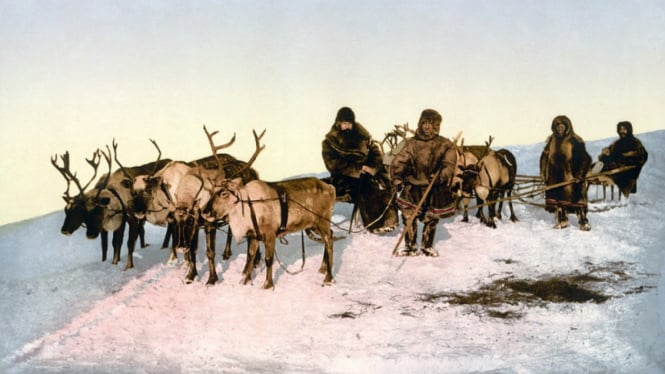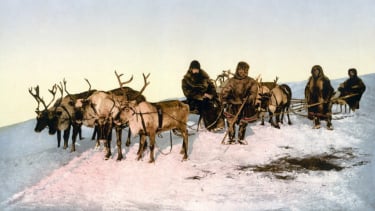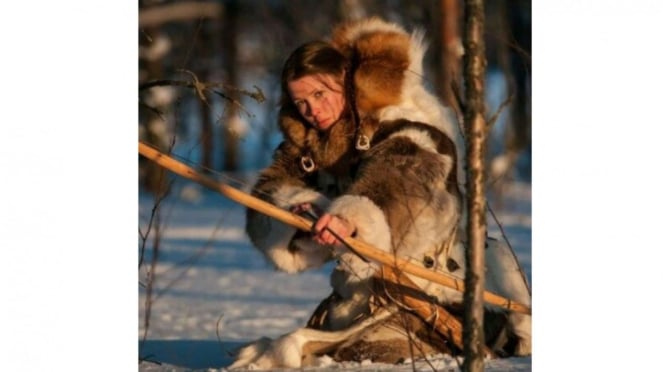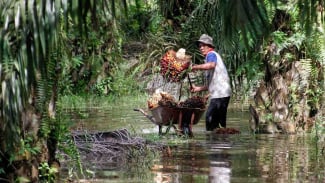Exploring the Unusual Sex Life of Eskimo Tribes
- Pixabay/WikiImages
Jakarta – The sexual life of the Eskimo tribe is tribal in nature and before external influences changed it, customs and traditions such as wife swapping and wild parties were common here.
They often offer their wives to a guest, which is one form of hospitality that has spiritual and practical implications, and the solemn and respected tradition of wife exchange is often accompanied by shamanic rituals.
There are many interesting facts about Eskimo tribe's sexual life that are worth knowing.
According to various sources, the Eskimo tribe is widely known as the strongest tribe in the world.
Ilustrasi Suku Eskimo
- Tangkapan Layar
This is because they can survive in the extreme cold of the North Pole, reaching minus 0 degrees Celsius.
In addition to being the strongest tribe, there is another interesting thing that often draws attention to this tribe.
That is, the sexual culture guaranteed to surprise you if you know it.
In Eskimo culture, there is a sense of freedom in sexual activities. For example, wives can sleep with their brothers-in-law.
Moreover, if a wife is impregnated by someone else, it is not a big issue.
Wife swapping and shamanic activities are closely related in Eskimo society. After the shaman's invocation of spirits, men will exchange wives.
The shaman encourages this activity but when it comes to outsiders, handing over a wife is a different matter.
Traders and travelers may be offered a widow or single woman upon arriving in an Eskimo community, but most young women marry soon after they become sexually mature.
Women can also offer themselves to outsiders. Overall, wife exchange and sharing among Eskimo people are one thing, but giving a wife to a stranger is not common.
The blackout shamanic ritual, as known in Greenland, involves uniting husband and wife to enjoy a passionate night in darkness.
After the Eskimo group gathers, the shaman waits to contact spirits, turning off the lights so married Eskimo can sleep with anyone, then turning them back on after everyone is done.
This should be a way to welcome spirits into a friendly environment, and, interestingly enough, is often intended to yield completely non-sexual results, such as better hunting weather.
When Christian missionaries observed such practices, they rejected them.
Although there is quite an open idea about sexuality, masturbation and same-sex attraction are not accepted in most Eskimo communities.
According to one elder from the Naujaat tribe, "we always live in tents or share igloos. This was never openly expressed in my time, but that doesn't mean it didn't exist."
In some tribes, there is not even a word for "homosexuality" or "lesbian." However, in the Nunavut language, "the term for lesbian relationships is 'two soft things rubbing together,' while for gay men, the term is 'two hard things rubbing together.'"
Due to difficulties in Eskimo culture in recognizing LGBTQ individuals, there are efforts to make it more public and promote gay rights in territories like Nunavut.
However, this is a tough struggle. In 2003, a spokesperson for the Qikiqtani Inuit Association stated.
"We do not agree with same-sex marriage. This is not part of our customs, it is foreign to us. As children, we know that only men and women can have children together."
He went on to say that he believes the Inuit tribe should accept same-sex marriage as they do other aspects of white culture, which would negatively impact the traditional way of life of the Inuit tribe.
In the Eskimo tribe, there used to be a very strange tradition that could make people's eyes widen. That strange tradition was the ritual of having random sex with people inside an igloo.
Usually, the ritual was led by the local tribal leader, and random sexual activities were conducted when the tribal leader began to extinguish the light source. However, such rituals are no longer practiced today.
In the close relationship between men in Eskimo culture, there is an exchange of food, supplies, and other items, especially when they are hunting.
Men regard their friends as "brothers" and share everything, including, sometimes, their wives.
This habit has additional implications. Sometimes, when a man is hunting, "his friends think they are helping his wife by stopping by to alleviate her loneliness," according to a polar-themed memoir.
Wife swapping can take the form of joint marriages, which is a more structured agreement between two couples who exchange partners.

































